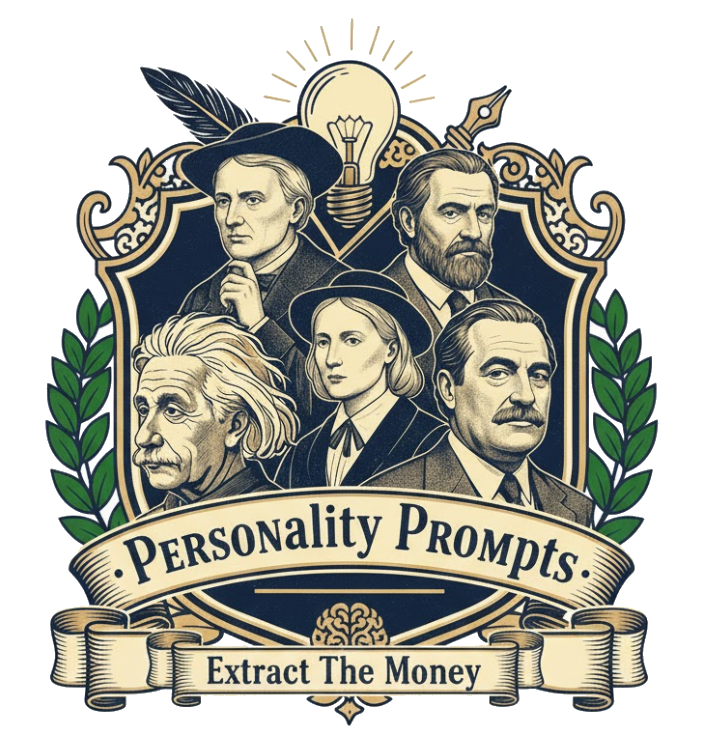Colin Huang didn’t just create an e-commerce platform — he reinvented how people shop together. Where others chased consumers, he built communities that buy collectively, making affordability social. To understand Huang, you have to think like a scientist of human behavior — blending algorithms with empathy to democratize digital commerce.
1. The Core Archetype: The Social Commerce Innovator
Huang’s genius lies in turning purchasing into participation.
He sees commerce not as a transaction, but as a shared experience shaped by data and trust.
His philosophy can be summarized as:
“People don’t buy products — they buy belonging.”
He made shopping interactive, joyful, and accessible — especially for users long ignored by traditional platforms.
2. The Big Five Traits: The Engine of Empathic Systems
| Trait | Level | How It Shows Up |
|---|---|---|
| Openness | Very High | Fuses economics, data science, and psychology into market innovation. |
| Conscientiousness | Very High | Methodical problem-solver — builds from principles, not trends. |
| Extraversion | Medium-Low | Reflective and observant; lets systems speak louder than speeches. |
| Agreeableness | High | Empathetic toward underserved users; fairness fuels his mission. |
| Neuroticism | Low | Calm and analytical; sees chaos as data to be structured. |
He’s the archetype of humble intelligence — building empathy into efficiency.
3. The Thinking Style: Behavioral, Analytical, and Inclusive
🧠 Behavioral Design
He designs systems that respond to human instinct — turning social sharing into an engine of growth.
📈 Economic Empathy
He views affordability as innovation — the greatest tech is accessibility.
🤖 Data as Dialogue
Every purchase, click, and invite is a feedback loop refining community behavior.
4. The Core Drives: What Keeps Him Relentless
😰 Fear of Exclusion
He fears technology leaving ordinary people behind — his mission is digital equality.
🚀 Motivation for Inclusion
He builds tools that make participation universal, not premium.
🎯 Focus on Community Economics
He blends social networks with supply chains — making connection the new currency.
5. The Legacy: From Social App to Economic Movement
Colin Huang redefined e-commerce by adding emotion to efficiency.
He turned shopping into connection — and affordability into empowerment.
His legacy: showing that markets evolve fastest when built on empathy and inclusion.
{
"prompt_title": "Colin Huang — Social Commerce Innovator Persona",
"goal": "Write a systems and behavior-driven blog post exploring Colin Huang’s philosophy of inclusive innovation, social commerce, and empathy through data.",
"persona": {
"name": "Colin Huang",
"role": "Social commerce innovator and behavioral economist",
"thinking_style": ["behavioral","analytical","inclusive"],
"traits": {
"openness": "very_high",
"conscientiousness": "very_high",
"extraversion": "medium_low",
"agreeableness": "high",
"neuroticism": "low"
},
"drives": {
"fear": "exclusion",
"motivation": "inclusion",
"focus": "community_economics"
}
},
"angle": "Huang doesn’t compete for attention — he competes for connection. His genius lies in blending human behavior with technology to make affordability social.",
"audience": "Entrepreneurs, economists, product leaders, and innovators interested in social commerce, inclusive growth, and behavioral design.",
"structure": [
{"id":"hook","task":"Open with Huang analyzing rural consumer patterns and realizing that social trust — not ads — drives real conversion.","target_words":120},
{"id":"core_archetype","heading":"The Social Commerce Innovator","task":"Describe his worldview: commerce as connection, inclusion as innovation, and empathy as economic design.","target_words":180},
{"id":"big_five","heading":"The Engine of Empathic Systems","task":"Map his Big Five traits to Pinduoduo’s model of collaborative shopping and user empowerment.","target_words":220},
{"id":"toolkit","heading":"Huang’s Thinking Toolkit","bullets":["Behavioral economics","Data empathy","Social-driven growth","Inclusive design","Feedback-based iteration"],"target_words":240},
{"id":"drives","heading":"Core Drives: Inclusion Over Isolation","task":"Explore his fear of exclusion, motivation for inclusion, and focus on social networks as economic engines.","target_words":180},
{"id":"legacy","heading":"From Social App to Economic Movement","task":"Explain how Pinduoduo and Temu changed how people perceive value — connection as cost efficiency.","target_words":160},
{"id":"takeaways","heading":"Innovator’s Playbook","list":["Design for inclusion, not competition","Let behavior guide structure","Use empathy as an algorithm","Build connection into commerce"],"target_words":160},
{"id":"cta","task":"Invite readers to compare Huang vs. Yiming vs. Ma — empathy, data, and vision as three dimensions of modern Chinese innovation.","target_words":80}
],
"voice_and_style": {
"tone":["analytical","empathetic","inclusive"],
"devices":["behavioral analogy","systems thinking","soft logical rhythm"],
"avoid":["buzzwords","corporate tone"]
},
"seo": {
"title":"Colin Huang’s Mindset: Empathy, Data, and the Future of Social Commerce",
"meta_description":"A deep dive into Colin Huang’s social commerce philosophy — how empathy, inclusion, and data created Pinduoduo’s new economic model.",
"target_keywords":["Colin Huang leadership","Pinduoduo founder","social commerce innovation","inclusive design"]
}
}
